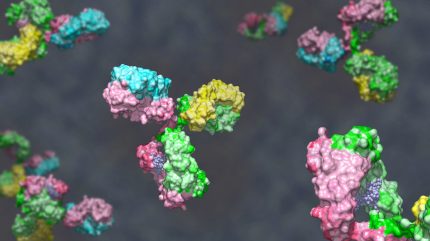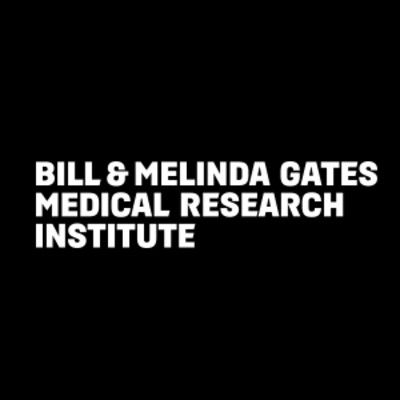预约演示
更新于:2025-05-07
Tuberculosis, extrapulmonary
肺外结核
更新于:2025-05-07
基本信息
别名 Extra Pulmonary Tuberculosis、Extra-Pulmonary Tuberculoses、Extra-Pulmonary Tuberculosis + [17] |
简介 MYCOBACTERIUM infections of organs other than the lung. |
关联
10
项与 肺外结核 相关的药物靶点- |
作用机制 结核菌素皮试诊断 |
在研机构 |
原研机构 |
非在研适应症 |
最高研发阶段批准上市 |
首次获批国家/地区 中国 |
首次获批日期2020-04-01 |
靶点 |
作用机制 ddlA抑制剂 [+1] |
在研机构 |
原研机构 |
在研适应症 |
最高研发阶段批准上市 |
首次获批国家/地区 美国 |
首次获批日期1964-06-29 |
靶点- |
作用机制 免疫刺激剂 |
原研机构 |
在研适应症 |
非在研适应症 |
最高研发阶段临床3期 |
首次获批国家/地区- |
首次获批日期1800-01-20 |
51
项与 肺外结核 相关的临床试验NCT06893757
Prospective Cohort of People Starting Treatment for Tuberculosis Disease in France - ANRS 464s FrenchTB
The French Tuberculosis Cohort is a prospective, national, multicenter, low-intervention study including subjects aged 18 years and older with tuberculosis disease for which inpatient treatment is initiated. The goal of this observational study is to follow-up and anti-tuberculosis treatment will be provided according to current French recommendations. Participants will provide sociodemographic, clinical, biological, radiological and bacteriological data at various protocol visits at 2 days, 1 and 2 weeks, 2 months, at the end of treatment, 12 and 24 months. Consenting participants will have samples collected at scheduled visits for the establishment of a biobank. This will include blood, urine, breath and hair samples. The positive mycobacterial strains will constitute a specimen bank.
开始日期2025-06-01 |
申办/合作机构 |
NCT06845618
Mycobacterium Tuberculosis Complex Cell-free DNA (Mtb-cfDNA) for the Pharmacometric Assessment of Anti-tuberculosis Treatment: a Proof-of-concept Study
Tuberculosis (TB) is a leading infectious cause of death worldwide. Current strategies for monitoring TB treatment response are culture dependent and insensitive. New methods of assessing treatment response in vivo could inform new drug development and other treatment strategies. Cell-free DNA (cfDNA) - small circulating fragments of DNA - is widely used in maternofetal medicine and oncology for diagnosis and assessment of treatment response. This study aims to investigate whether pathogen derived Mycobacterium tuberculosis-specific cfDNA (Mtb-cfDNA) can be used to monitor TB treatment response.
This feasibility study will take place at Mae RaMat TB Center in Thailand and includes two study groups:
1. Assay Development and Validation
2. Longitudinal Assessment of Mtb-cfDNA levels
This feasibility study will take place at Mae RaMat TB Center in Thailand and includes two study groups:
1. Assay Development and Validation
2. Longitudinal Assessment of Mtb-cfDNA levels
开始日期2025-05-01 |
申办/合作机构 |
ChiCTR2500101168
Efficacy and Safety of 4- to 6-Month Regimens for Rifampicin-Resistant Tuberculosis: A Multicenter, Non-Inferiority, Randomized Controlled Trial [EAST-TB]
开始日期2025-04-21 |
申办/合作机构- |
100 项与 肺外结核 相关的临床结果
登录后查看更多信息
100 项与 肺外结核 相关的转化医学
登录后查看更多信息
0 项与 肺外结核 相关的专利(医药)
登录后查看更多信息
5,666
项与 肺外结核 相关的文献(医药)2025-12-31·Case Reports in Plastic Surgery and Hand Surgery
Disseminated tuberculosis presenting as finger swelling in a 2-year-old: a case report of TB osteomyelitis
Article
作者: AlZoum, Nora M. ; N. AlGhazi, Abdulrahman ; H. AlZahrani, Mohammed ; AlMutiri, Wijdan A.
2025-06-01·Radiology Case Reports
A rare case of tuberculous cystitis and pulmonary tuberculosis in a 60-year-old smoker: A case report
Article
作者: Azer, Hafsi ; Ganzoui, Imen
2025-06-01·PEC Innovation
A lifestyle educational course as an adjunct to biologic administration in patients with severe asthma: A feasibility study
Article
作者: Cartwright, Lucy ; Davies, Drew ; Masoli, Matthew ; Hyland, Michael E ; Lanario, Joseph W
8
项与 肺外结核 相关的新闻(医药)2024-11-22
NANJING, China, Nov. 22, 2024 /PRNewswire/ -- Nanjing Leads Biolabs Co., Ltd. (hereinafter referred to as "Leads Biolabs") announced that LBL-024, an anti-PD-L1/4-1BB bispecific antibody independently developed by the company with global intellectual property rights for the treatment of neuroendocrine cancer, has obtained Orphan Drug Designation (ODD) from the U.S. Food and Drug Administration (FDA). This marks another significant milestone following the Breakthrough Therapy Designation granted to LBL-024 by the Center for Drug Evaluation (CDE) of National Medical Products Administration (NMPA) in China.
Dr. Charles Cai, Chief Medical Officer of Leads Biolabs, said "LBL-024 obtained Breakthrough Therapy Designation from CDE in October this year for the treatment of advanced extrapulmonary neuroendocrine cancer. Our clinical data to date has been very encouraging, suggesting that LBL-024 could meaningfully improve outcomes of patients living with this devastating disease. The grant of ODD from FDA further underscores the exceptional potential of LBL-024 to address a critical gap in this therapeutic area. These policy supports for obtaining Orphan Drug qualification will greatly expedite the commercialization of LBL-024, potentially changing the treatment landscape for patients with advanced neuroendocrine cancer who currently have few therapeutic options."
Dr. Xiaoqiang Kang, founder, chairman and CEO of Leads Biolabs, said "The receipt of ODD for LBL-024 from FDA represents a pivotal milestone in our global strategy. This designation not only enables LBL-024 to receive additional policy support and resource allocation during its development, accelerating its path to market and positioning it as a potential first-in-class therapeutic antibody targeting 4-1BB worldwide, but also provides us with greater market opportunities and avenues for growth on a global scale."
About LBL-024
LBL-024 is a tetravalent bispecific antibody that simultaneously targets PD-L1 and 4-1BB, serving dual functions: blocking the immunosuppressive PD-1/PD-L1 pathway, and selectively co-stimulating 4-1BB in the tumor microenvironment to enhance immune responses. The dual functions of LBL-024—lifting PD-1/PD-L1 immune inhibition and intensifying 4-1BB modulated T cell activation—synergistically enhance the anti-tumor immune response.
LBL-024 received IND approvals from both FDA and NMPA on July 30, 2021 and September 9, 2021 respectively to conduct phase Ⅰ/Ⅱ clinical research, and has achieved outstanding results. Sponsored by Leads Biolabs, led by Professor Shen Lin from Beijing Cancer Hospital with participation of multiple clinical trial centers, the current clinical data demonstrate that LBL-024 monotherapy has more than doubled both the Objective Response Rate (ORR) and Overall Survival (OS) compared to existing treatments for this disease. Based on the current treatment status and the available safety and efficacy data, LBL-024 has entered into a single-arm pivotal trial for extrapulmonary neuroendocrine carcinomas in July 2024 and stands as the globally first 4-1BB-targetd drug candidates to have reached pivotal stage, according to Frost & Sullivan.
About Neuroendocrine Cancer
Neuroendocrine carcinoma (NEC) is a class of poorly differentiated, high-grade neuroendocrine neoplasms (NEN), which originate in the diffuse neuroendocrine cell system and may occur in many different sites. Its molecular characteristics are significantly different from those of neuroendocrine tumors (NET). NEC can be divided into pulmonary NEC and extrapulmonary NEC, among which pulmonary NEC includes small cell lung cancer (SCLC) and pulmonary large cell neuroendocrine carcinoma (p-LCNEC). According to previous data collected, the number of new cases of SCLC is about 98,193, p-LCNEC is about 19,639, and extrapulmonary NECs is about 9,820 in the United States every year. As a result, there are an estimated 127,652 new cases of NECs in the United States each year, meeting the FDA's definition of a rare disease.
Symptoms of NEC can vary depending on the type of tumor, its location in the body and the hormone released. The survival rate of NEC varies according to the type of cancer and whether it spreads. Specifically, the 5-year survival rate of pulmonary NECs is 5.6%, digestive tract NECs is 13.1%, and other primary NECs are 26.0%. Due to the limited effective treatment options available for patients, the overall survival rate of NEC is low, and more effective new treatment options are urgently needed.
About Orphan Drug Designation
Orphan drugs are medications used for the prevention, treatment, and diagnosis of rare diseases. According to the Orphan Drug Act of the United States, Orphan Drug Designation is established to encourage the development of drugs for treating rare diseases. It provides a series of incentives for new drug development, including but not limited to: (1) tax credits for clinical trial expenses; (2) specific guidance from FDA on all stages of clinical research; (3) exemption of the application fee for new drug registration; and (4) 7 years of market exclusivity after listing.
About Leads Biolabs
Nanjing Leads Biolabs Co., Ltd. is a clinical-stage biotechnology company dedicated to the discovery, development, and commercialization of innovative therapies to address underserved medical needs in oncology, autoimmune, and other severe diseases both in China and globally. Backboned by our proprietary technology platforms and robust drug development capabilities, we have curated a rationally designed and differentiated pipeline of 12 innovative drug candidates, six have successfully progressed into the clinical stage. Leads Biolabs is committed to providing safe, effective, accessible and affordable new drugs to address the unmet needs of patients around the world. For more information, please visit:
SOURCE Leads Biolabs
WANT YOUR COMPANY'S NEWS FEATURED ON PRNEWSWIRE.COM?
440k+
Newsrooms &
Influencers
9k+
Digital Media
Outlets
270k+
Journalists
Opted In
GET STARTED

孤儿药临床申请突破性疗法免疫疗法
2024-10-14
IND2025主会场授课已被预定,大会第一天下午茶歇前授课时间段预定开始,咨询热线:177 0186 0390。点击图片,查看IND2024会后报告
文章来源:柯瑞斯·IVD
摘 要
结核病作为世界上最致命的传染病之一,是全球性危害公众健康的公共卫生问题。我国是结核病高负担国家,发病人数仅次于印度,结核病防控形势依然严峻,所以早期迅速、准确诊断是防治结核病的关键。近年来,为更好控制、诊断结核病,国内外已开展多项研究并取得了一定的创新结果。因此,本研究将从细菌学、免疫学、分子生物学的相关检测及结核病组学研究等方面总结结核病实验室诊断的现状与进展,并作如下综述。
结核病(tuberculosis,TB)是一种传染性疾病,由结核分枝杆菌(MTB)引起,多通过空气进行传播,常见症状为咳嗽、发热、盗汗、体重减轻等。结核病感染人数约占全球的1/4,每天约4 000人死于该病,近30
000人感染可预防、治愈的结核病[1]。据世界卫生组织(WHO)统计2021年约有1 060万人患结核病,患病人数与2020年相比增加4.5%,其中160万人死于结核病[包括18.7万人类免疫性缺陷病毒(简称HIV)阳性者][2]。结核病实验室诊断是发现传染源的主要方法,但传统检测方法周期长、灵敏度低,无法满足临床需求。因此联合运用新的辅助诊断方法,对全球结核病研究和防控具有重要意义。本研究将从细菌学、免疫学、分子生物学的相关检测及结核病组学研究等方面总结结核病实验室诊断的现状与进展,并作如下综述。
1 结核病细菌学检测
目前,结核病的细菌学检测仍是诊断感染结核病的金标准。痰涂片和培养是应用最广泛的结核病实验室诊断技术, 常见方法为抗酸涂片染色法、荧光染色法、传统结核菌固体培养和全自动结核分枝杆菌培养仪快速检测。
1.1 涂片染色与荧光染色技术
萋尼氏抗酸染色痰涂片显微镜检查是最经典的结核分枝杆菌检测方法,具有经济、迅速、操作简单的优点,但灵敏度较低。有研究对抗酸染色阳性病例进行分析,在收集的结核抗酸染色14 060例样本中,阳性307例,阳性率为2.18%[3]。可见此方法出现假阴性的情况较多,受主观因素和标本质量影响较大。荧光染色则运用荧光提高显微镜检查的灵敏度,但由于价格昂贵目前难以普及。
1.2 培养技术
传统固态培养法灵敏度略高于涂片法,是鉴定活菌的可靠方法,还可进一步进行菌种鉴定和药敏试验;但其培养时间长,需4~6周才能检测到菌种,且无法区分结核分枝杆菌与非结核分枝杆菌。培养仪的原理是基于液体培养法,以全自动分枝杆菌培养监测仪为(BD公司,型号:BACTEC MGIT960)代表,其通过测定液体培养基中氧气消耗量来判定 MTB有无生长。王巍等[4]比较了罗氏培养法与BACTEC MGIT960检测系统在肺结核中的应用,结果显示BACTEC
MGIT960培养阳性率为67.6%,罗氏培养阳性率为53.3%,且前者检测周期明显缩短。但也存在该技术对实验室生物安全级别要求高、成本高等缺点,不能大规模普及。因此,应联合其他辅助诊断方法提高阳性检出率,在此基础上寻找细菌学证据。
2 结核病免疫学检测
免疫学检测方法包括TB抗原和抗体检测、多种抗体联合检测、结核菌素皮肤试验(tuberculin skin test,TST)、γ-干扰素释放试验(interferon-γ release assays,IGRAs)、重组结核杆菌融合蛋白(ESAT6-CFP10,EC)皮肤试验等。
2.1 结核病抗原和抗体检测技术
TB 抗原包括菌体细胞、结核菌素(PPD)、脂阿拉伯甘露聚糖(LAM)、热休克蛋白65(HSP)抗原、早期分泌性抗原靶-6(ESAT-6) 等。由于抗原成分复杂且存在交叉抗原,所以,目前通过技术对抗原进行表达和纯化,大量制备TB蛋白质成分以检测人体内是否存在抗体。胶体金免疫层析法检测结核病患者中特异性结核抗体免疫球蛋白(Ig)G/IgM 的灵敏度为41.15%、特异度为91.67%[5],可见多种抗原和抗体联合检测有助于提高检测的敏感性,但仍受患者年龄、检测的抗体类型(IgG、IgM、 IgA) 、结核病感染类型等多方面因素的影响。
2.2 结核菌素皮肤试验技术
TST是实验室诊断方法之一,是基于Ⅳ型变态反应原理建立的皮肤试验,具有快速、简单、低成本的优点,但特异性较低,曾接种卡介苗(BCG)或接触非结核分枝杆菌的环境均可导致TST假阳性。
2.3 γ-干扰素释放试验技术
IGRAs原理为机体初次感染结核分枝杆菌后致敏T淋巴细胞,再次感染时γ-干扰素在内的细胞因子释放,通过检测γ-干扰素判断感染状况。刘珍敏等[6]对299名儿童研究对象进行结核感染T细胞斑点试验(T-SPOT.TB)、涂片检查,与TST比较灵敏度和特异度,结果显示T-SPOT.TB灵敏度远高于TST,且标本获取方便,能快速诊断。
虽然IGRAs具有较好的诊断价值,但测试费用昂贵,对实验室设备要求较高,给结核病高负担国家带来较大压力。WHO在2022年发表的报告中指出[7]:基于特定抗原的新结核杆菌抗原皮肤试验(TBSTs)已经开始被研究,这些试验结合更简单的皮肤试验和高特异性的IGRAs,将可能成为结核感染诊断的有效工具。
2.4 EC皮肤试验技术
2021年的一项研究显示:EC皮肤试验与T-SPOT.TB试验相比,EC皮肤试验显示出较高的特异性和灵敏度,具有良好的安全性和较高的诊断准确性[8]。此外,EC皮肤试验在HIV感染者诊断中也显示出价值,无论是否接种卡介苗,EC皮肤试验对HIV感染者均有较高的诊断价值。因此,EC皮肤试验可能是一种有效的替代诊断试验,用于HIV流行率高和卡介苗接种高的环境或人群,但尚未得到系统的审查,因此还需进一步研究。
3 结核病分子生物学检测
早诊断、早隔离、早治疗能够减少肺结核发病和死亡,但MTB生长缓慢,通过传统实验室检查难以快速确诊,而分子生物学诊断可更快地进行病原检测。目前,应用分子生物学诊断结核病的方法主要包括聚合酶链式反应(PCR)技术、环介导等温扩增(LAMP)技术、线性探针分析 (LPA)技术、基因芯片技术、基因组测序技术、基质辅助激光解吸电离飞行时间质谱(MALDI-TOF
MS)技术等。
3.1 聚合酶链式反应技术
PCR通过在体外模拟体内DNA复制的过程获得大量DNA,包括变性、退火、延伸三个阶段。PCR是传统的分子生物学检测方法,成本低、方法成熟、有较好的检出率,但存在易污染、非特异性扩增、会导致假阳性等缺点。因此产生了很多改进的方法,例如即时检验(point of care testing,POCT)技术、荧光定量(real-time)PCR技术、数字PCR (digital PCR,d PCR)技术。
3.1.1即时检验技术
POCT是一种集核酸提取、检测、扩增为一体的新型结核分子诊断技术,无需在特定的分子实验室操作,该技术主要用于门诊及住院的疑似结核病患者初筛及鉴别诊断中,可在2 h内从痰液等样本中检测是否存在结核分枝杆菌复合群,能够极大提高结核病病原学阳性率,更好地服务于临床并提高诊疗水平。于佳佳等[9]首次成功建立并验证了针对MTB的PCR-CRISPR检测技术具有敏感度与特异度高、稳定性好、成本低等特点。基于CRISPR/Cas的超敏诊断技术为TB诊断提供了可能,且可能适合于POCT。
3.1.2 荧光定量PCR技术
Gene Xpert MTB/RIF检测是基于实时荧光定量PCR原理的一种检测技术,可在2 h内检测样本中是否存在结核分枝杆菌及是否耐药,是目前最快的结核病分子诊断技术之一,可以准确地排除非结核分枝杆菌,并分离鉴定出RIF抗性。该方法操作简便、检测准确性高、污染概率小,但价格昂贵、培养阴性菌量少且对HIV患者的灵敏度不够。为弥补这些不足,Gene Xpert MTB/RIF Ultra(简称Xpert Ultra)增加了两种MTB检测分子靶标(IS1081 和IS6110)以提高检测灵敏度,并且有更低的TB检测限(LOD),与Gene
Xpert MTB/RIF特异性相当[10]。因此Ultra可显著提高结核病的检测率,尤其是对于低细菌性患者。对于肺外结核的诊断,一项研究显示Xpert Ultra对76例行CSF培养的结核性脑膜炎患者检测敏感度明显高于MGIT 960培养[11]。此外,Xpert
Ultra在HIV阳性患者中表现出高灵敏度。Xpert
Ultra 在标本含菌量少、肺外结核和艾滋病合并结核患者中的灵敏度较好。自2021年来,WHO建议将粪便与痰一起作为一种标本类型用于Xpert Ultra检测结核病的初始测定,可在紧急情况时作为首选方法[12]。对于儿童来讲,痰液难以获得,可选择粪便代替检测,但该技术特异性较低,且成本较高,还需进一步研究。
3.1.3 数字 PCR技术
dPCR是一种比荧光定量PCR具有更高灵敏度和绝对定量的微量DNA鉴定技术,是基于单分子PCR方法进行计数的核酸定量,绝对定量不受标准曲线影响,具有高灵敏度、低样本需求量低、高耐受性等特点。研究显示可使用d PCR来调查MTB的异耐受性,通过对katG和rpoB基因进行荧光定量PCR突变检测,确定结核分枝杆菌的异质性耐药率,这两种基因通常分别与异烟肼和利福平耐药有关[13]。微滴数字PCR(droplet
digital PCR, ddPCR)能够检测出突变株和野生型菌株,这使其成为早期诊断和管理耐药结核病的宝贵工具,同时也印证早期发现和管理耐药结核病对于控制结核病进展的重要性。数字PCR技术还未能获得大量临床研究,这也有可能是与其仪器设备和试剂昂贵有关,还需进一步研究。
3.2 环介导等温扩增技术
LAMP技术是一种新的核酸扩增方法,具有简单、快速、操作简便的特点。该技术在灵敏度、特异性和检测范围等指标上优于PCR技术。其不依赖热循环设备而实现高通量快速检测,检测成本远低于荧光定量PCR。但因其灵敏度高,开盖容易形成气溶胶污染,易造成假阳性。有研究将LAMP技术与传统方法(涂片镜检和MGIT 960)相比,结果显示TB-LAMP检测MTB的效能更高,且涂片镜检和TB-LAMP并联合检测肺泡灌洗液的敏感性更好[14],这提示LAMP技术可作为诊断儿童肺结核的替代试验。对于结核性脑膜炎的诊断,LAMP技术阳性率高、耗时短,能早期获得结果[15],表明LAMP技术对于早期诊断结核性脑膜炎具有较好的参考意义。
3.3 线性探针分析技术
LPA技术是通过应用生物素标记引物进行DNA的扩增,将扩增产物变性后与固定在尼龙膜上的特异寡核苷酸探针进行杂交,通过酶联免疫显色法显示结果,其是耐多药结核病检测方法之一。该方法具有较高的灵敏度和特异度,且检测速度快。利用该技术的仪器比较有代表性的为INNO-LiPA Rif.TB和MTBDRplus。2008年WHO批准使用一线探针法基因型MTBDRplus
v1.0,用于快速检测耐多药结核病(MDR-TB);2011年,新版本的LPA技术出现基因型MTBDRplus v2.0 [16]。二线结核病药物耐药性基因(基因型MTBDRsL v2.0)2015年出现,用于检测与氟喹诺酮(FQs)和二线注射药物(SLDIs)耐药性相关的突变,Singh等[17]研究表明基因型MTBDRsL
v2.0检测FQ和SLIDs的特异性分别为92.31%和100.00%,灵敏度为100.00%。MTBDRsL是目前可检测广泛耐药结核的分子诊断技术,但是该方法的成本较高,仍是耐多药结核病高负担国家的问题之一。
3.4 基因芯片技术
基因芯片又称DNA芯片,测序原理为杂交测序法,通过与一组已知序列的核酸探针杂交进行核酸序列测定,得出一组序列完全互补的探针序列,进而重组出靶核酸的序列。该方法将多种探针固定在支持物上,可一次性对样品大量序列进行检测和分析,具有自动化程度高、操作序列多、检测效率高的优点,可用于菌种的鉴定及耐药性检测。2018年,有研究证明生物芯片技术对RIF和INH耐药及耐多药结核病检测具有良好的敏感度和特异度,值得在我国临床推广[18]。其中生物芯片对RIF检测的敏感度为86.08%,特异度为97.7%;对INH耐药的敏感度为79.36%,特异度为98.71%,对MDR-TB检测的敏感度为78.01%,特异度为98.86%。此外,对于涂阳肺结核患者MTB菌种鉴定,基因芯片法对结核分枝杆菌复合群鉴定符合度为100.00%,可较好的鉴定结核分枝杆菌菌种,并与常规菌培养结果具有高度一致性[19]。相较于痰涂片、痰培养方法,基因芯片技术可提高阳性检出率,但是基因芯片仍然存在着许多难以解决的问题,例如技术成本昂贵、复杂、重复性差、分析泛围较狭窄等,还需进一步研究。
3.5 基因组测序技术
基因测序是一种新型基因检测技术,主要测序原理是循环微阵列法。其可以预测多种疾病,是将提纯化后的基因组核酸使用高通量测序仪进行测序,获取细菌基因组DNA序列。靶向二代测序(TNGS)可应用于结核分枝杆菌复合体耐药性相关基因突变中,识别耐药性[20],以粪便为标本并为难以提供呼吸道标本的肺结核患者提供了获得关键诊断信息的机会。宏基因组二代测序(mNGS)由于其全面性,被认为是可能取代传统方法的微生物学方法,是一种很有前途的传染病检测技术,m NGS诊断结核病经meta分析的灵敏度和特异度分别为70%和99%[21]。全基因组测序(WGS)可获得详细的细菌全基因序列,分析耐药基因突变从而预测其耐药表型。WGS可以是结核病耐药监测和确定治疗方案的一种重要方法,虽有明显优势,但是由于操作繁琐且价格高昂,仅在发达国家及低负担结核病国家开展。
3.6 基质辅助激光解吸电离飞行时间质谱技术
MALDI-TOF MS是近年发展起来的一种质谱技术,已成为检测和鉴定多肽、蛋白质、多糖、核苷酸、糖蛋白、高聚物及多种合成聚合物的强有力工具。其主要对微生物的核糖体蛋白组进行分析,形成不同的指纹图谱,与数据库中已知菌种的鉴定谱图进行统计学聚类分析,获得未知样本的鉴定结果。该方法具有灵敏度高、准确度高、分辨率高、图谱简明、质量范围广及速度快等特点,且可大量检测。MALDI-TOF MS诊断肺结核涂阴或无痰肺结核敏感度为68.5%[22],优于其他方法,有较好的应用前景。与基因芯片相比,MALDI-TOF MS分析时间短、简单、快速、成本低且可以区分结核分枝菌与非结核分枝菌。此外,MALDI-TOF MS也可用于结核分枝杆菌耐药性评估。MALDI-TOF MS技术在MTB药敏检测中表现出良好的灵敏度和特异度,但其无法鉴定不能被培养的细菌,只能鉴定培养阳性的细菌,可以作为临床判断的补充。
4 结核病组学相关研究进展
近年来,结核病组学研究发展迅速,其较高的特异度及灵敏度为进一步快速诊断结核病、区分潜伏性肺结核(LTBI)与活动性肺结核(ATB)提供强有力的支持,为深入了解结核病的发病机制、耐药机制及寻找新的治疗靶点提供了重要的帮助,具有较好的临床应用前景。在结核病的组学研究中,基因组学研究是最早开展的领域之一,通过使用高通量DNA测序和生物信息学来分析整个基因组的功能和结构。在1998年首次对结核分枝杆菌H37Rv菌株进行了全基因组测序,结果显示基因表达产物中40%蛋白质有精确的功能[23]。如今随着技术不断发展,现在已经有许多改良的新方法,前文已详细表述过,现不作过多叙述。
4.1 基于转录组学的生物标志物
转录组学是从RNA水平筛选结核相关的特异性差异表达基因,从而确定生物标志物,可有效预测结核病进展。研究筛选出的3个转录标志(FCGR1A、ZNF296和C1QB)可区分ATB和LTBI[24],其中AUC为97.3%,为结核病患者靶向治疗提供可能。此外对于耐药检测具有重要意义,2021年的一项研究显示7个基因(TRIM1、9、21、32、33、56、66)能够区分利福平耐药菌株的感染,为RR-TB的发病机制提供了新的实验基础[25]。
4.2 基于蛋白组学的生物标志物
蛋白组学通过分析正常与病理个体之间蛋白质组的差异,为疾病找到新的诊断途径,设计新的治疗靶点,利用蛋白组学筛选结核病生物标志物提高结核病诊断准确性。结核病相关蛋白质可作为潜在的诊断标志物用于区分 LTBI 和ATB。贺仁忠等[26]筛选出8个蛋白标志物,其中Rv1441c、R0494可作为鉴别LTBI和ATB的候选标志物。Yang等[27]筛选出8个蛋白生物标志物(I-TAC、I-309、MIG、颗粒溶素、FAP、MEP1B、弗林蛋白酶和LYVE-1),在区分结核和非结核的验证队列中AUC为0.915,特异度为84%,敏感度为75%。2021年对161名参与者痰液进行分析,发现a-1-酸性糖蛋白两种亚型(即:ORM1和ORM2)在TB抗原检测时显著增加,可能成为肺结核显著的生物标志物[28]。
4.3 基于代谢组学的生物标志物
代谢组学是研究生物系统在特定条件下的整体代谢水平,可揭示结核病发病和耐药过程中代谢产物的变化,从而发现新的治疗靶点。2022一项研究通过GC-MS和LC-MS/MS分析研究结核分枝杆菌感染对血清代谢组的影响,发现了7种代谢物在区分肺结核患者与健康组时表现出较好的性能,可能成为新的生物标志物[29]。Berney等[30]利用代谢组学技术研究发现,宿主体内S-腺苷甲硫氨酸和蛋氨酸的消耗可导致MTB无法增殖和死亡,因此为开发有效的抗结核化疗提供了极好的靶点,但作用机制未完全清楚。代谢组学研究目前比较少,因此可以通过多组学联合分析,更全面地了解结核病菌在感染过程中的作用机制,从而发现更多的治疗靶点。
5 小结
综上,当前结核病的实验室诊断方法种类非常多,从传统的试验方法到现在的测序等,有着全方位的研究和探索。各种方法原理上有较大差异,在结核病诊断中需要综合运用多种技术和手段,包括痰液检测、血液检测、免疫学诊断和分子生物学诊断等。临床需根据各种诊断方法的优缺点选择最佳方法,而诊断技术也需不断发展和完善,找到一个具有高灵敏度、高特异度、更加可靠的方法。对于儿童、免疫功能低下等患者,目前诊断及治疗还需进一步研究。
本文引用来源:王泽锦,胡素侠,戚应杰.结核病实验室诊断方法的现状与进展[J].大医生,2024,9(02).
END
免责声明:本文仅作知识交流与分享及科普目的,不涉及商业宣传,不作为相关医疗指导或用药建议。文章如有侵权请联系删除。
TDS2025检测自动化建设与应用论坛主会场,大会第一天下午茶歇前授课时间段预定开始,咨询热线:177 0186 0390。点击图片,查看TDS2024会后报告。
临床申请
2024-08-19
Phanes’ PT217 is a delta-like ligand 3 (DLL3) and a cluster of differentiation 47 (CD47- targeting bispecific antibody. Image Credit: Huen Structure Bio / Shutterstock.
The US Food and Drug Administration (FDA) has granted an orphan drug designation to Phanes Therapeutics’ PT217 in neuroendocrine carcinoma (NEC) indication.
This is the second orphan drug designation the therapy has received from the FDA. In 2022, PT217 received the designation for the treatment of small cell lung cancer (SCLC). The orphan drug status gives sponsors tax credits from clinical trials, exemption from user fees, and a potential seven years of market exclusivity for the therapy after approval, compared to the usual five years.
PT217
is a delta-like ligand 3 (DLL3) and a cluster of differentiation 47 (CD47)-targeting bispecific antibody. Phanes is investigating the therapy in patients with advanced or refractory cancers expressing DLL3, including SCLC, extrapulmonary NECs, and large cell neuroendocrine carcinoma of the lung (LCNEC). The Phase I SKYBRIDGE trial (NCT05652686) is evaluating the safety, tolerability and pharmacokinetics of
PT217 in combination
with Roche’s
PD-L1 therapy Tecentriq (atezolizumab).
Multiple pharmaceutical companies have invested in the
development of bispecific antibody therapies
. Earlier this month,
Merck
& Co (MSD) unveiled
plans to acquire
a CD3 and CD19-targeting T cell engager bispecific antibody, CN201, from Curon Biopharmaceutical. The deal is worth approximately $1.3bn in upfront and milestone-based payments. It is expected to close in Q3 this year.
In May,
Johnson & Johnson
(J&J)
paid $1.25bn to acquire global rights
for Numab Therapeutics’ IL-4R and IL-31-targeting bispecific antibody. The therapy is being evaluated as a treatment for atopic dermatitis in a Phase I trial (NCT05859724).
See Also:
AstraZeneca wins approval for Imfinzi in NSCLC perioperative setting
Hoth and Aronnax partner for HT-KIT cancer therapy development
Other therapies in Phanes’s pipeline are a CD73-targeting monoclonal antibody PT199, a Claudin 18.2 (CLDN18.2), and the CD47-targeting bispecific antibody PT886. The company is evaluating PT199 as a combination treatment with BeiGene’s Tivimbra (tislelizumab) for solid tumours in a Phase I MORNINGSTAR trial (NCT05431270).
The bispecific antibody PT886 is being trailed in combination with MSD’s Keytruda (pembrolizumab) in a Phase I/II TWINPEAK study (NCT05482893). The trial is expected to enrol approximately 114 participants with either unresectable or metastatic gastric adenocarcinoma, gastroesophageal junction (GEJ) adenocarcinoma, and pancreatic ductal adenocarcinoma (PDAC).

临床1期孤儿药免疫疗法临床申请
分析
对领域进行一次全面的分析。
登录
或

生物医药百科问答
全新生物医药AI Agent 覆盖科研全链路,让突破性发现快人一步
立即开始免费试用!
智慧芽新药情报库是智慧芽专为生命科学人士构建的基于AI的创新药情报平台,助您全方位提升您的研发与决策效率。
立即开始数据试用!
智慧芽新药库数据也通过智慧芽数据服务平台,以API或者数据包形式对外开放,助您更加充分利用智慧芽新药情报信息。
生物序列数据库
生物药研发创新
免费使用
化学结构数据库
小分子化药研发创新
免费使用






